Abstract
Attempts were made to elucidate the acetyl transformation of novel trichothecene mycotoxins, 3α,7α,15-trihydroxy-12,13-epoxytrichothec-9-en-8-one (deoxynivalenol) and its derivatives, by trichothecene-producing strains of Fusarium nivale, F. roseum, and F. solani. In the peptone-supplemented Czapek-Dox medium, F. roseum converted 3α-acetoxy-7α,15-dihydroxy-12,13-epoxytrichothec-9-en-8-one (3-acetyldeoxynivalenol) to deoxynivalenol. 3-Acetyldeoxynivalenol was also deacetylated by intact mycelia of the three strains in sugar-free Czapek-Dox medium. The growing F. nivale acetylated deoxynivalenol to afford a small amount of 3-acetyldeoxynivalenol. 3α,7α,15-Triacetoxy-12,13-epoxytrichothec-9-en-8-one (deoxynivalenol triacetate) was transformed by the intact mycelium of F. solani into 7α,15-diacetoxy-3α-hydroxy-12,13-epoxytrichothec-9-en-8-one (7,15-diacetyl-deoxynivalenol), which was then deacetylated to give 7α-acetoxy-3α,15-dihydroxy-12,13-epoxytrichothec-9-en-8-one (7-acetyldeoxynivalenol). It was noted that the ester at C-7 was not hydrolyzed by the fungal mycelium.
Full text
PDF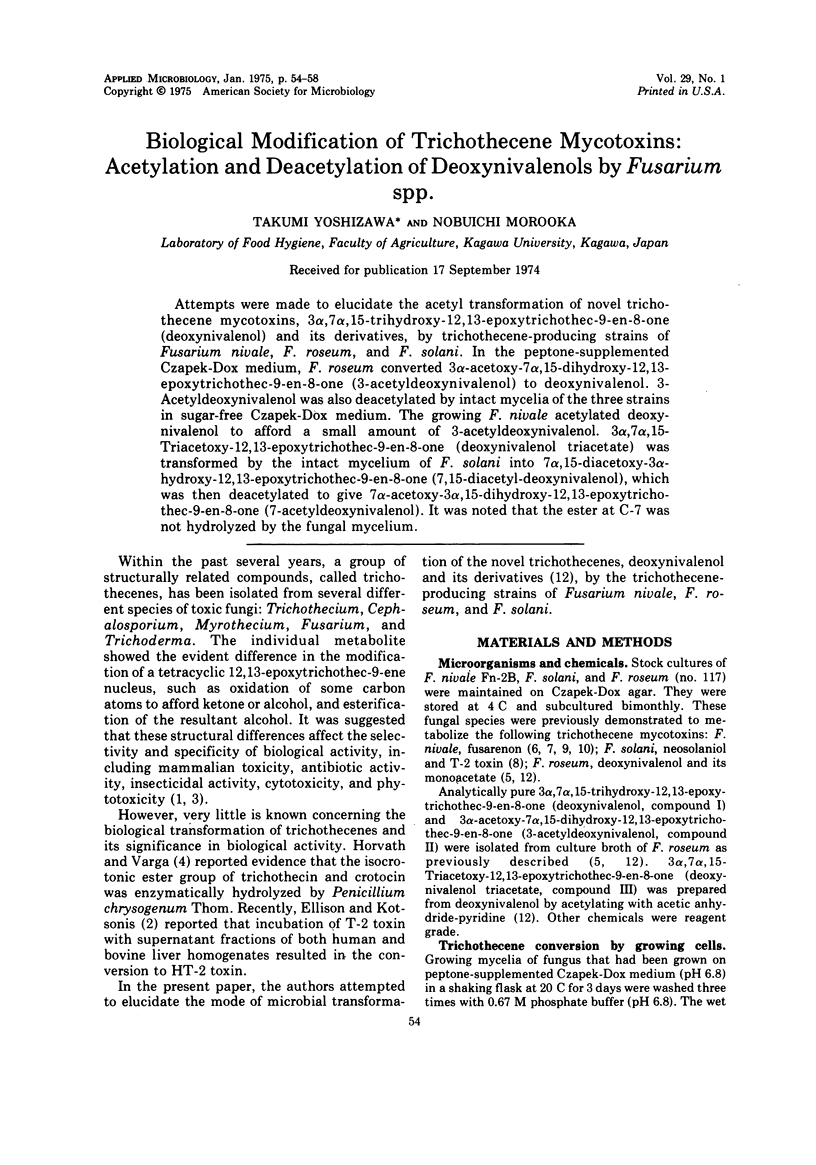
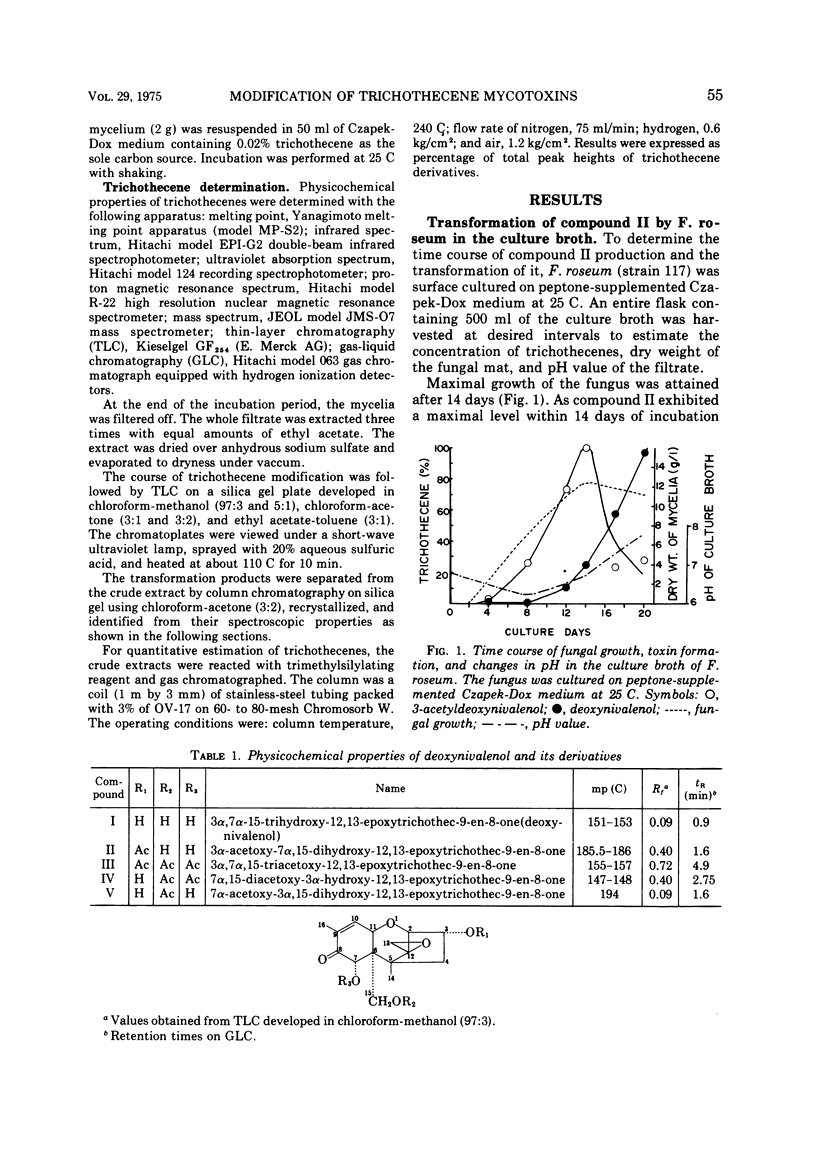
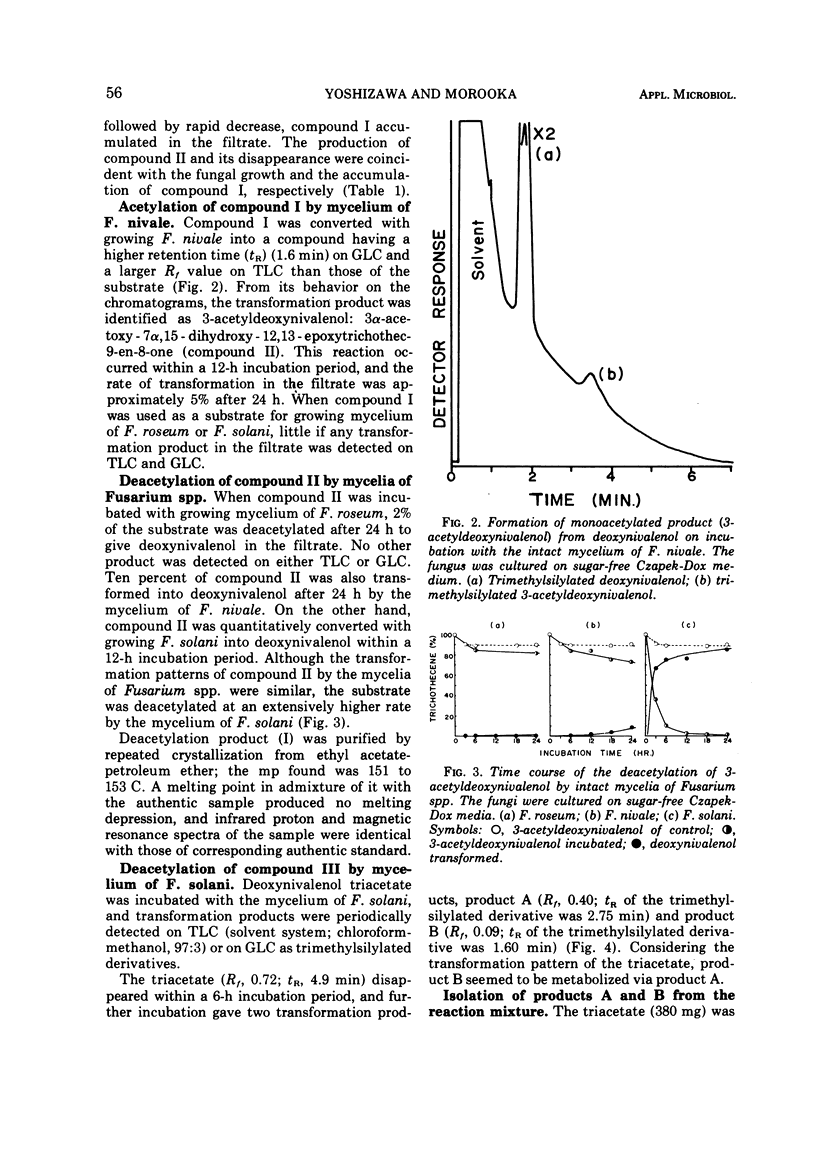
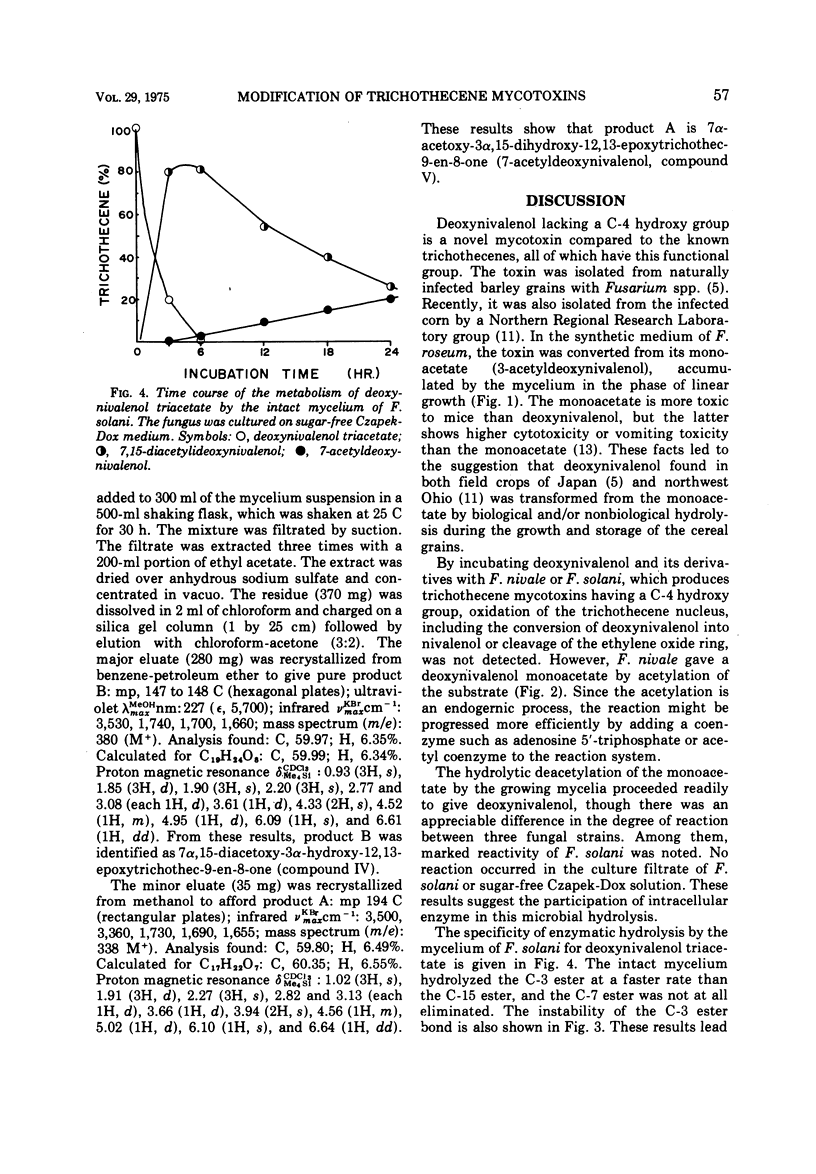
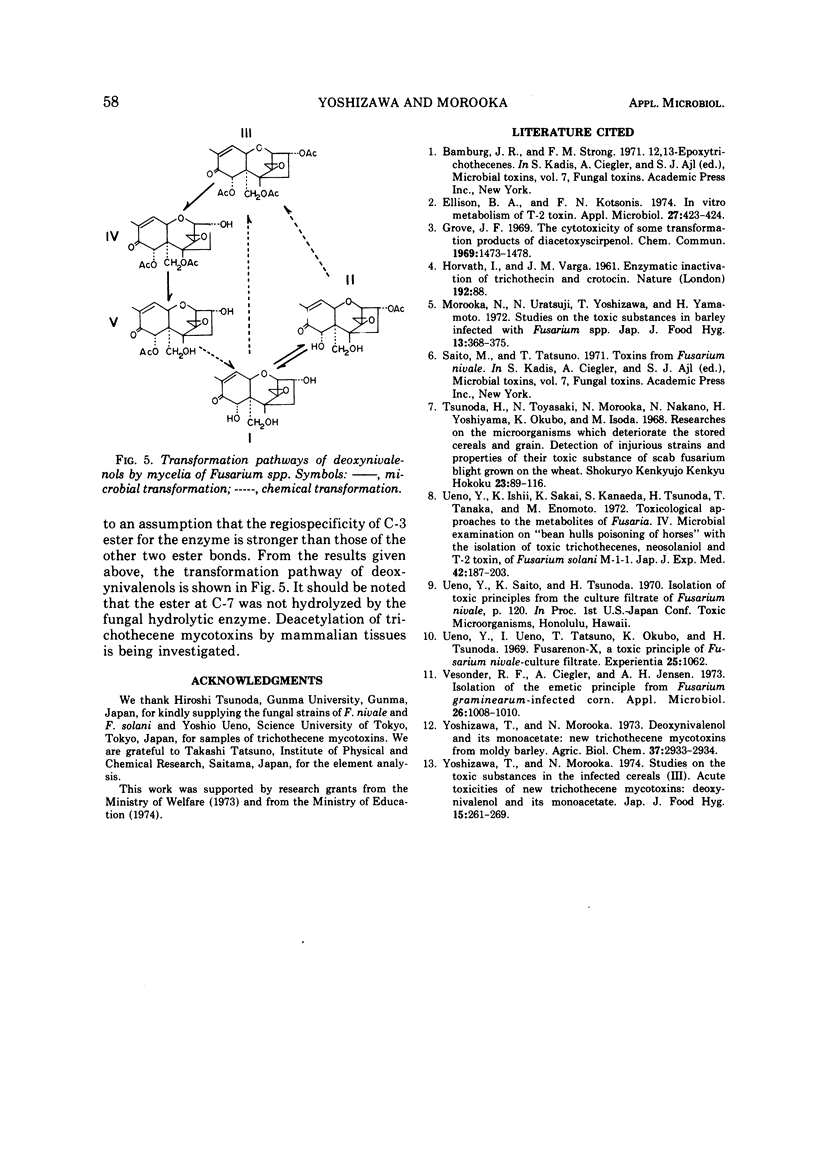
Selected References
These references are in PubMed. This may not be the complete list of references from this article.
- Ellison R. A., Kotsonis F. N. In vitro metabolism of T-2 toxin. Appl Microbiol. 1974 Feb;27(2):423–424. doi: 10.1128/am.27.2.423-424.1974. [DOI] [PMC free article] [PubMed] [Google Scholar]
- Grove J. F., Mortimer P. H. The cytotoxicity of some transformation products of diacetoxyscirpenol. Biochem Pharmacol. 1969 Jun;18(6):1473–1478. doi: 10.1016/0006-2952(69)90261-5. [DOI] [PubMed] [Google Scholar]
- HORVATH I., VARGA J. M. Enzymic inactivation of trichothecin and crotocin. Nature. 1961 Oct 7;192:88–88. doi: 10.1038/192088a0. [DOI] [PubMed] [Google Scholar]
- Ueno Y., Ishii K., Sakai K., Kanaeda S., Tsunoda H. Toxicological approaches to the metabolites of Fusaria. IV. Microbial survey on "bean-hulls poisoning of horses" with the isolation of toxic trichothecenes, neosolaniol and T-2 toxin of Fusarium solani M-1-1. Jpn J Exp Med. 1972 Jun;42(3):187–203. [PubMed] [Google Scholar]
- Ueno Y., Ueno I., Tatsuno T., Ookubo K., Tsunoda H. Fusareon-X, a toxic principle of Fusarium nivale--culture filtrate. Experientia. 1969 Oct 15;25(10):1062–1062. doi: 10.1007/BF01901430. [DOI] [PubMed] [Google Scholar]
- Vesonder R. F., Ciegler A., Jensen A. H. Isolation of the emetic principle from Fusarium-infected corn. Appl Microbiol. 1973 Dec;26(6):1008–1010. doi: 10.1128/am.26.6.1008-1010.1973. [DOI] [PMC free article] [PubMed] [Google Scholar]


